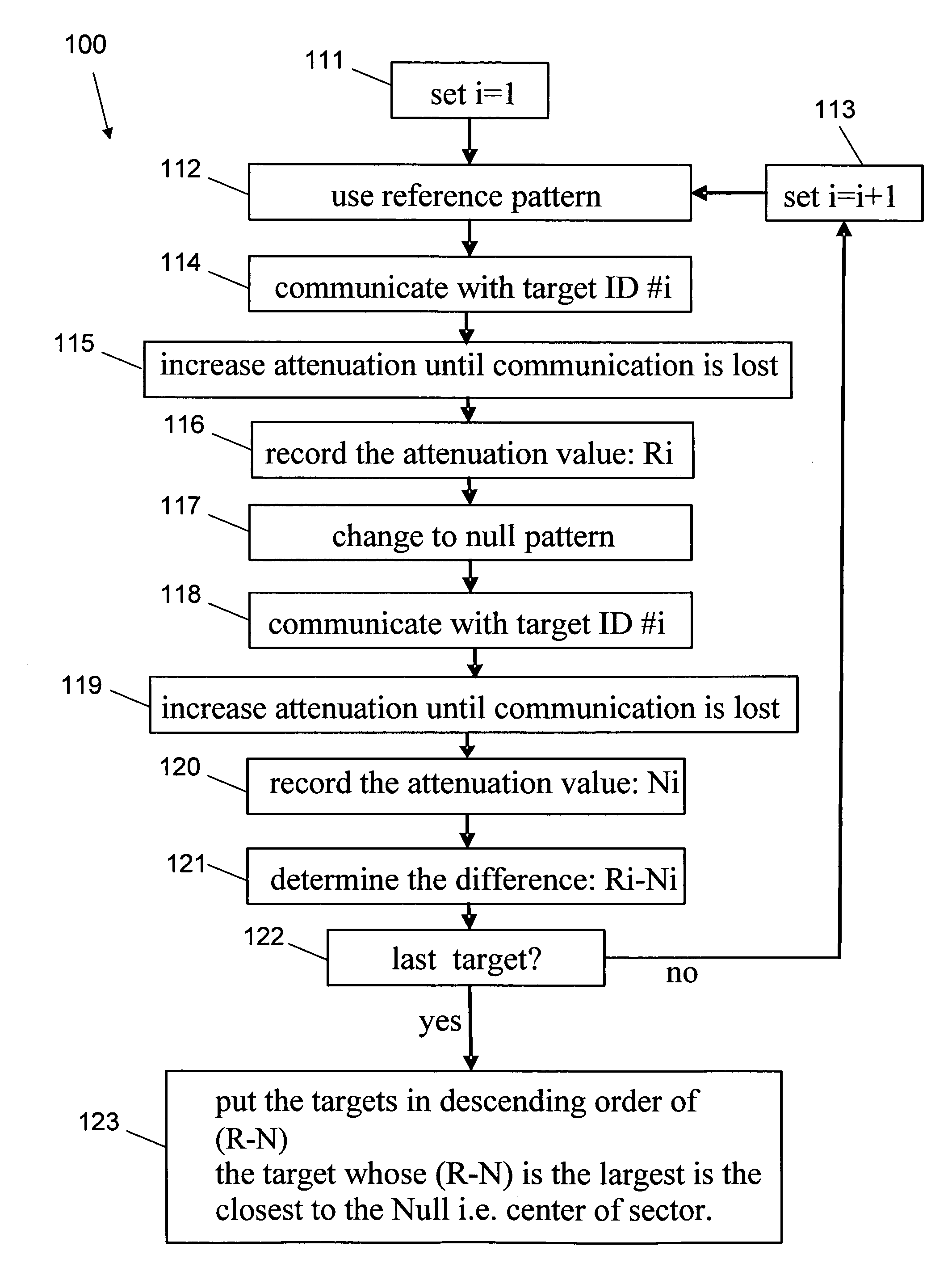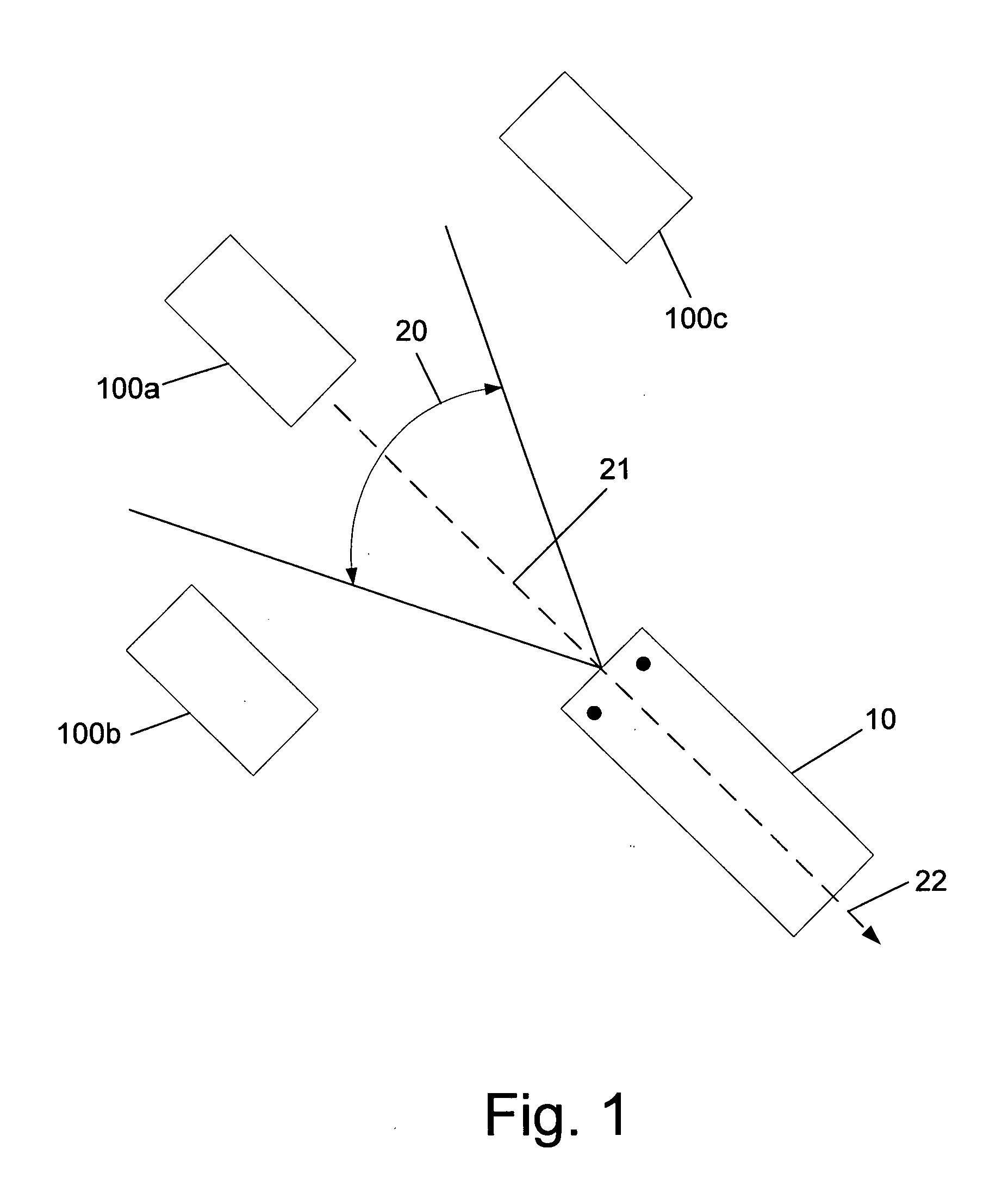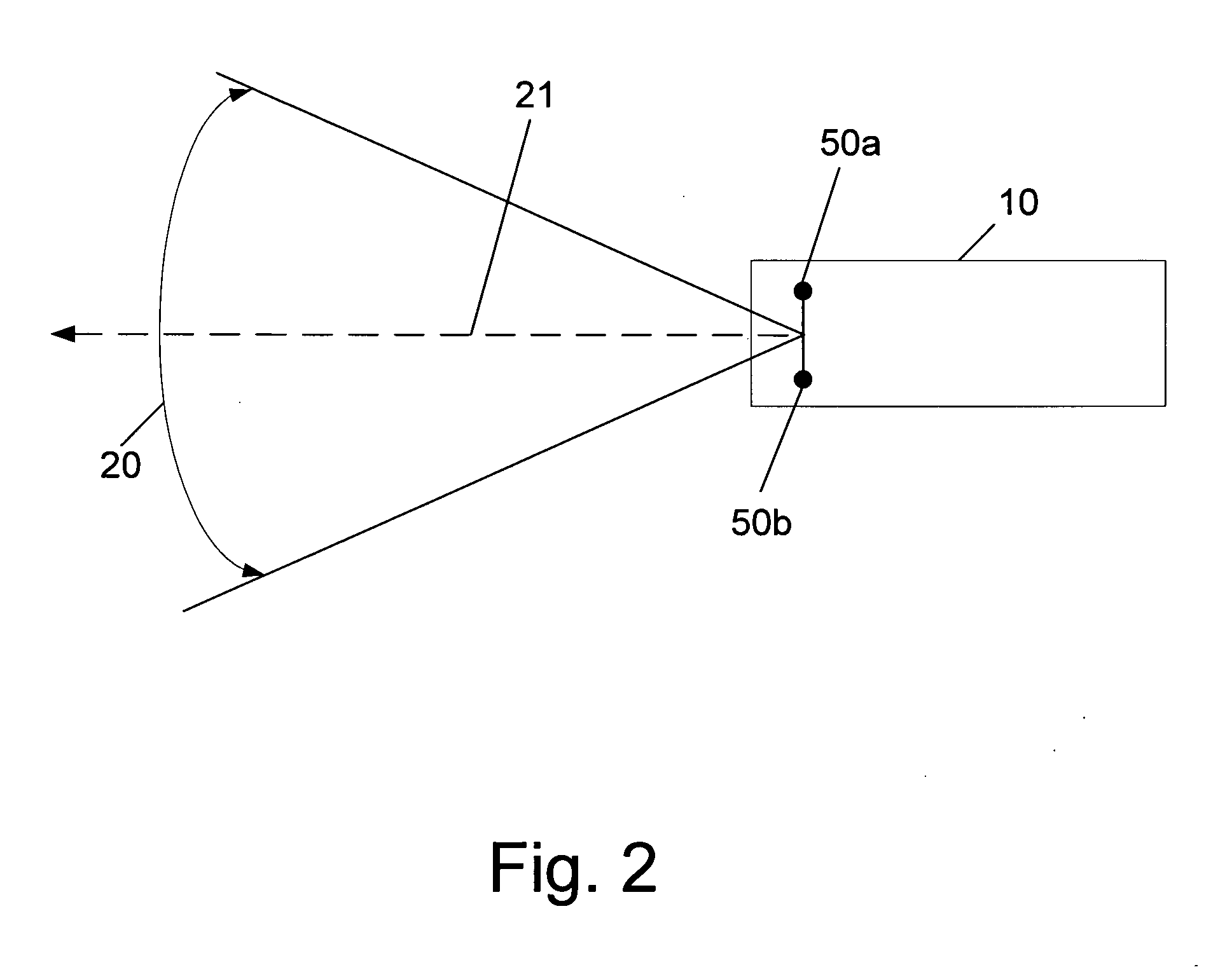Direction finding method and device
- Summary
- Abstract
- Description
- Claims
- Application Information
AI Technical Summary
Benefits of technology
Problems solved by technology
Method used
Image
Examples
Embodiment Construction
Definition of Terms
[0052]“Wireless Communication”—refers to the transfer of information and / or data and / or packets (formatted blocks of data) of any type or level and / or voice over long or short distances without the use of electrical conductors or “wires” but via Radio waves, at any given frequency.[0053]“Wireless Communication Protocol and / or Standard”—shall refer to any protocol and / or standard used to conduct wireless communication, such as, but not limited to, wireless information technology, cellular communication (such as, but not limited to, GSM, GPRS, CDMA), wireless networks, WLAN computer communications, wireless networking standards, such as, IEEE 802.11), wireless personal area networks (WPAN) and wireless mesh networks. (it should be clearly noted that among such protocols, but not limited only to them, are Wi-Fi, Bluetooth, Wi-Max, ZigBee, Z-wave, Insteon, cellular devices communication protocols, Near-Field Communication (NFC), RFID protocols or standards, etc.[0054]...
PUM
 Login to View More
Login to View More Abstract
Description
Claims
Application Information
 Login to View More
Login to View More - R&D Engineer
- R&D Manager
- IP Professional
- Industry Leading Data Capabilities
- Powerful AI technology
- Patent DNA Extraction
Browse by: Latest US Patents, China's latest patents, Technical Efficacy Thesaurus, Application Domain, Technology Topic, Popular Technical Reports.
© 2024 PatSnap. All rights reserved.Legal|Privacy policy|Modern Slavery Act Transparency Statement|Sitemap|About US| Contact US: help@patsnap.com










